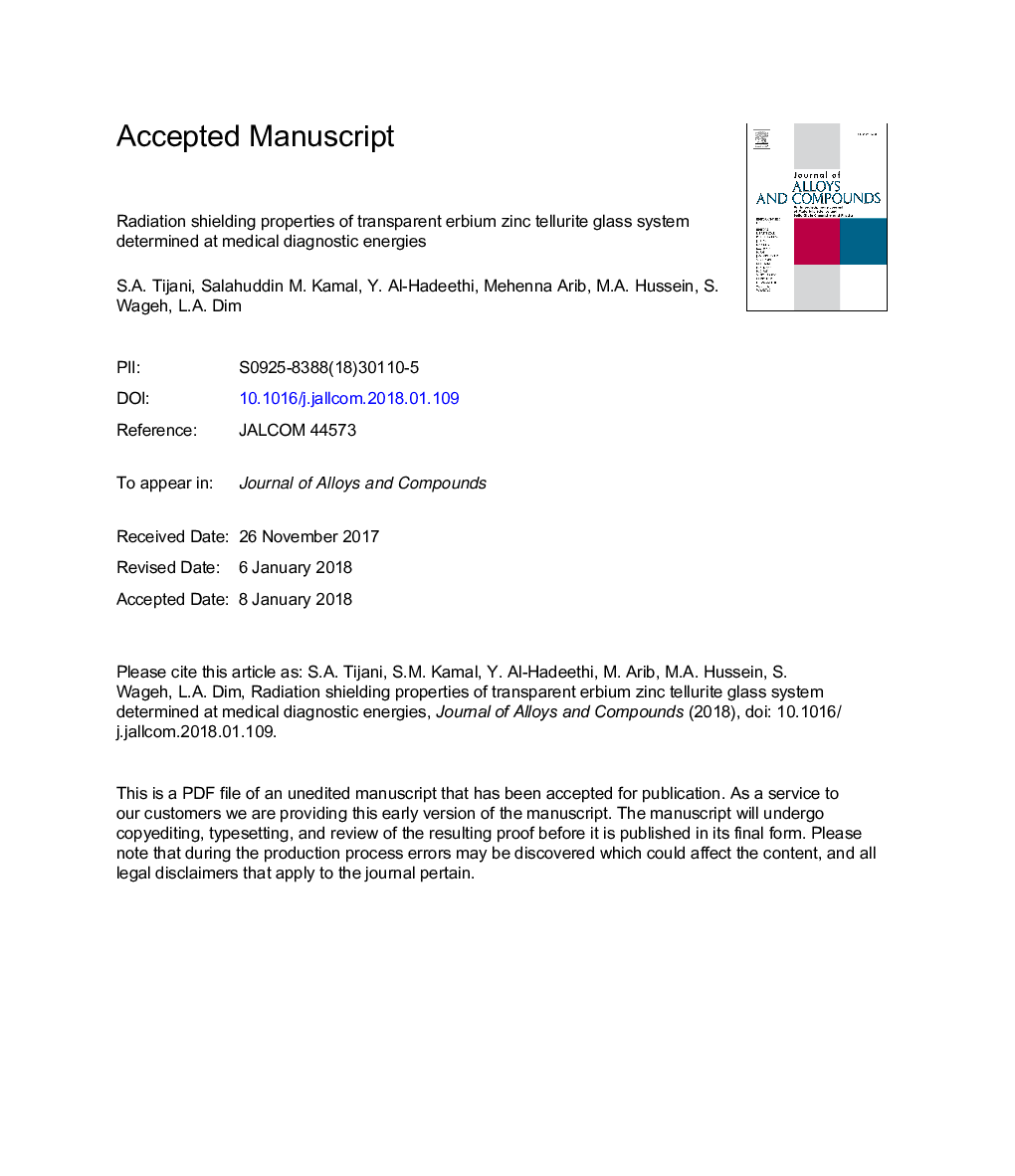| Article ID | Journal | Published Year | Pages | File Type |
|---|---|---|---|---|
| 7993416 | Journal of Alloys and Compounds | 2018 | 27 Pages |
Abstract
Heavy metal oxide glass is one of the major materials used to reduce unwanted radiation exposure of the personnel and patients, so producing an optimum and effective radiation shields is of utmost importance. In this study, the suitability of erbium doped tellurite glasses with molar composition - xEr2O3 - 20ZnO - (80-x)TeO2 (where x = 0, 1, 2, 3 and 4 mol.%) has been studied at the medical diagnostic energy range in order to produce a potential substitute for lead, lead glass and concrete used in diagnostic radiology. This is because lead is toxic and concrete takes much space among other disadvantages. WinXCom software has been used to calculate the mass attenuation coefficients (μ/Ï); and other related equations were used to derive the half value layers (HVL) and effective atomic numbers (Zeff) for the glass systems at photon average energies of 20 keV, 30 keV, 40 keV and 60 keV. These considered energies are the average energies of photons used in different practices of diagnostic radiology and the obtained results were compared with dominant shielding materials used in diagnostic radiology. The results showed that all the glass samples showed significantly better shielding properties than concrete at all energies while at 40 keV and 60 keV, they showed better radiation properties than lead glass. D5 sample is a potential substitute for elemental lead.
Related Topics
Physical Sciences and Engineering
Materials Science
Metals and Alloys
Authors
S.A. Tijani, Salahuddin M. Kamal, Y. Al-Hadeethi, Mehenna Arib, M.A. Hussein, S. Wageh, L.A. Dim,
